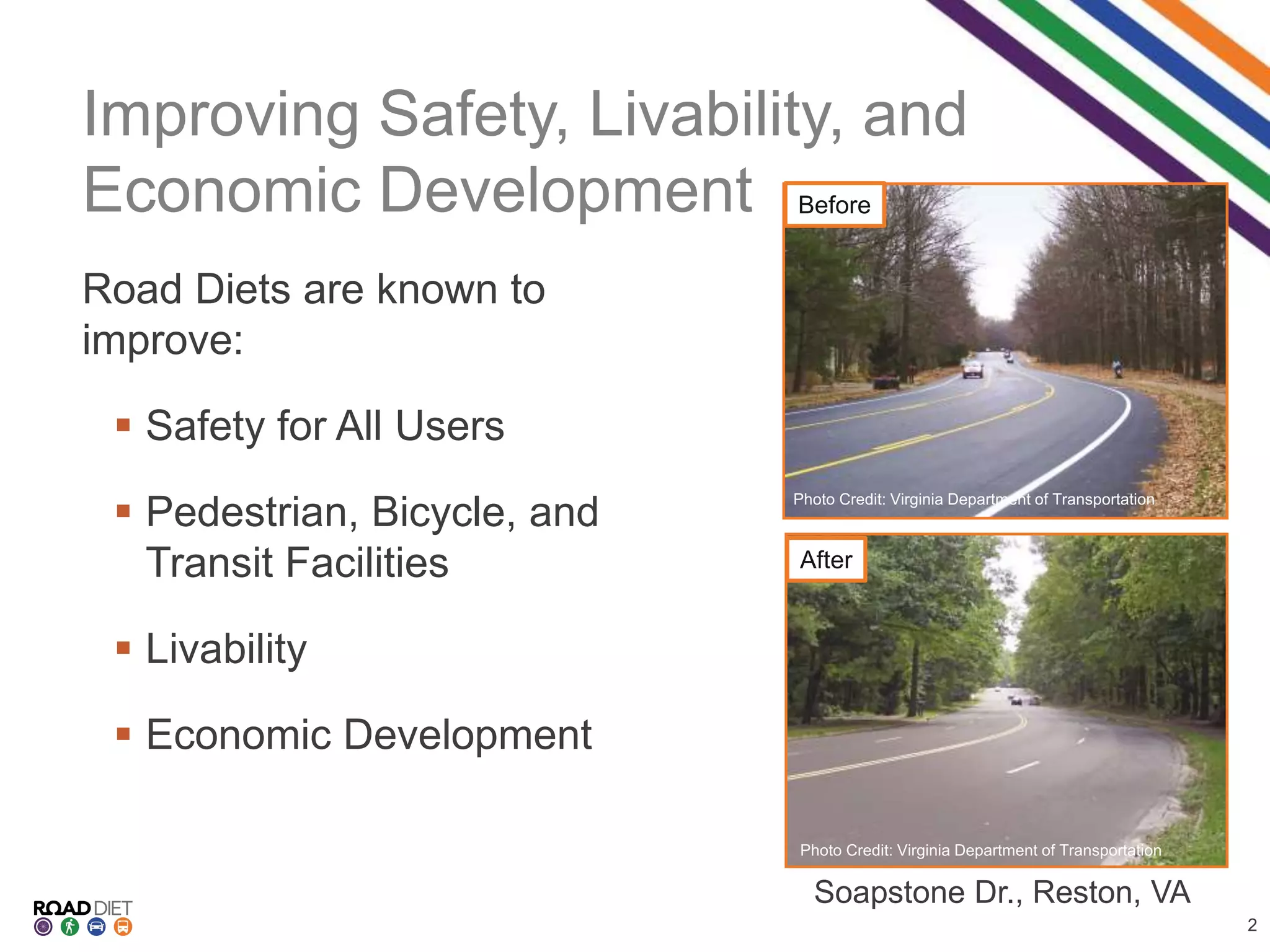The document discusses the benefits of implementing road diets, which reconfigure roadways to improve safety, livability, and economic development. Road diets have shown to reduce crashes, decrease vehicle speeds, and increase non-motorized transportation usage while fostering local economic growth. Various case studies illustrate successful applications and outcomes of road diets in different cities.














![Genesee County, MI
15
Road Diet Results
Reduced crashes by 30%
Improved livability
“Road Diets are seen as
treatments that can be used to
keep a downtown area
‘current’ and follow the
national [livability] trends.”
~ GCMPC
Photo: GCMPC](https://image.slidesharecdn.com/roaddiets-nado-160616010041/75/Road-Diet-Improving-Safety-Livability-and-Economic-Development-15-2048.jpg)











